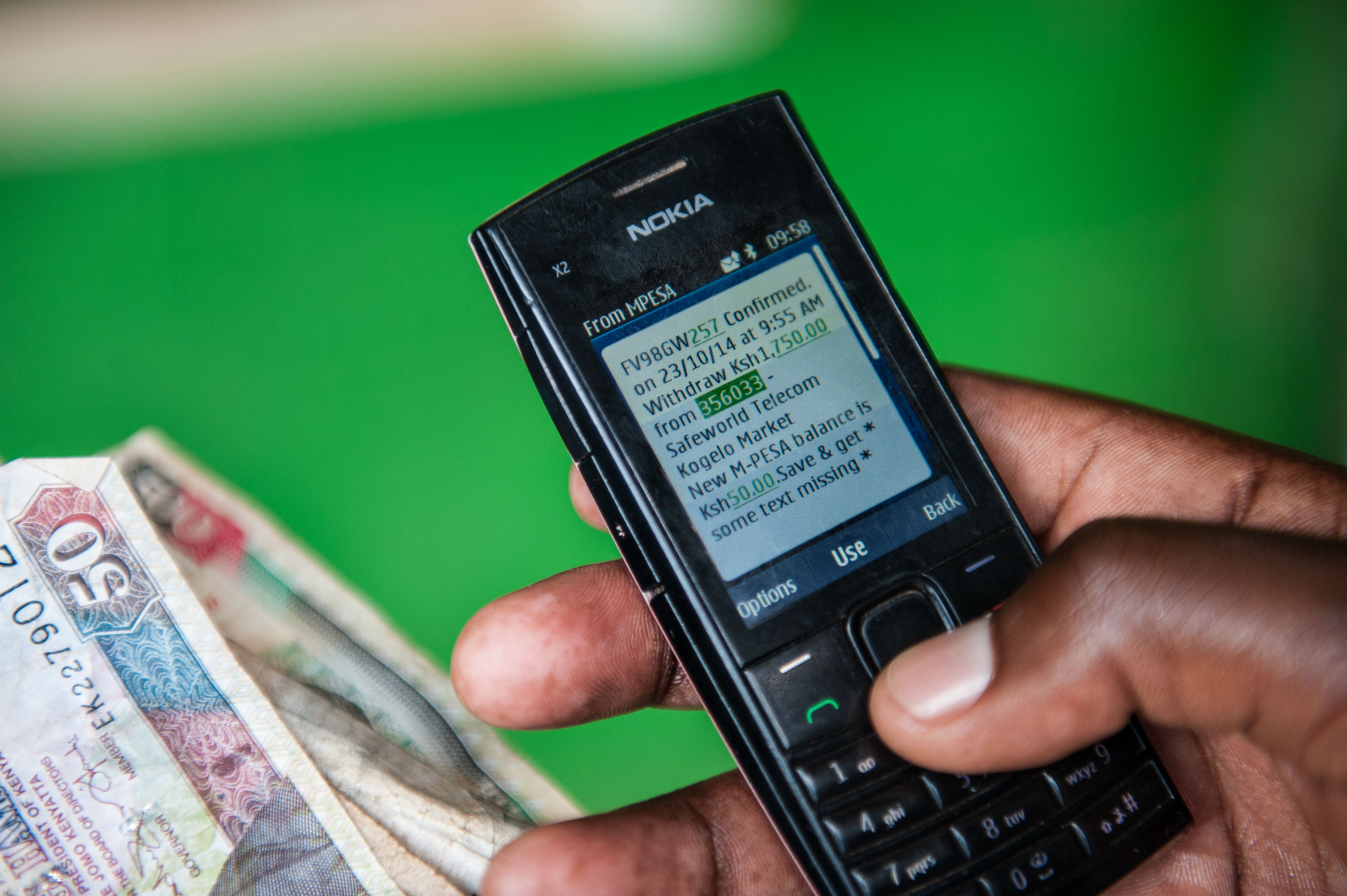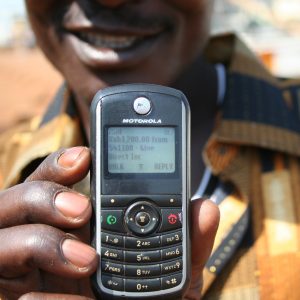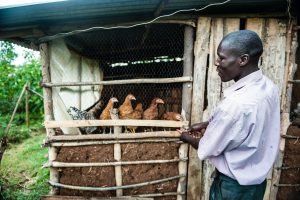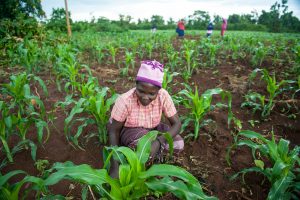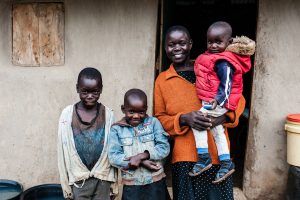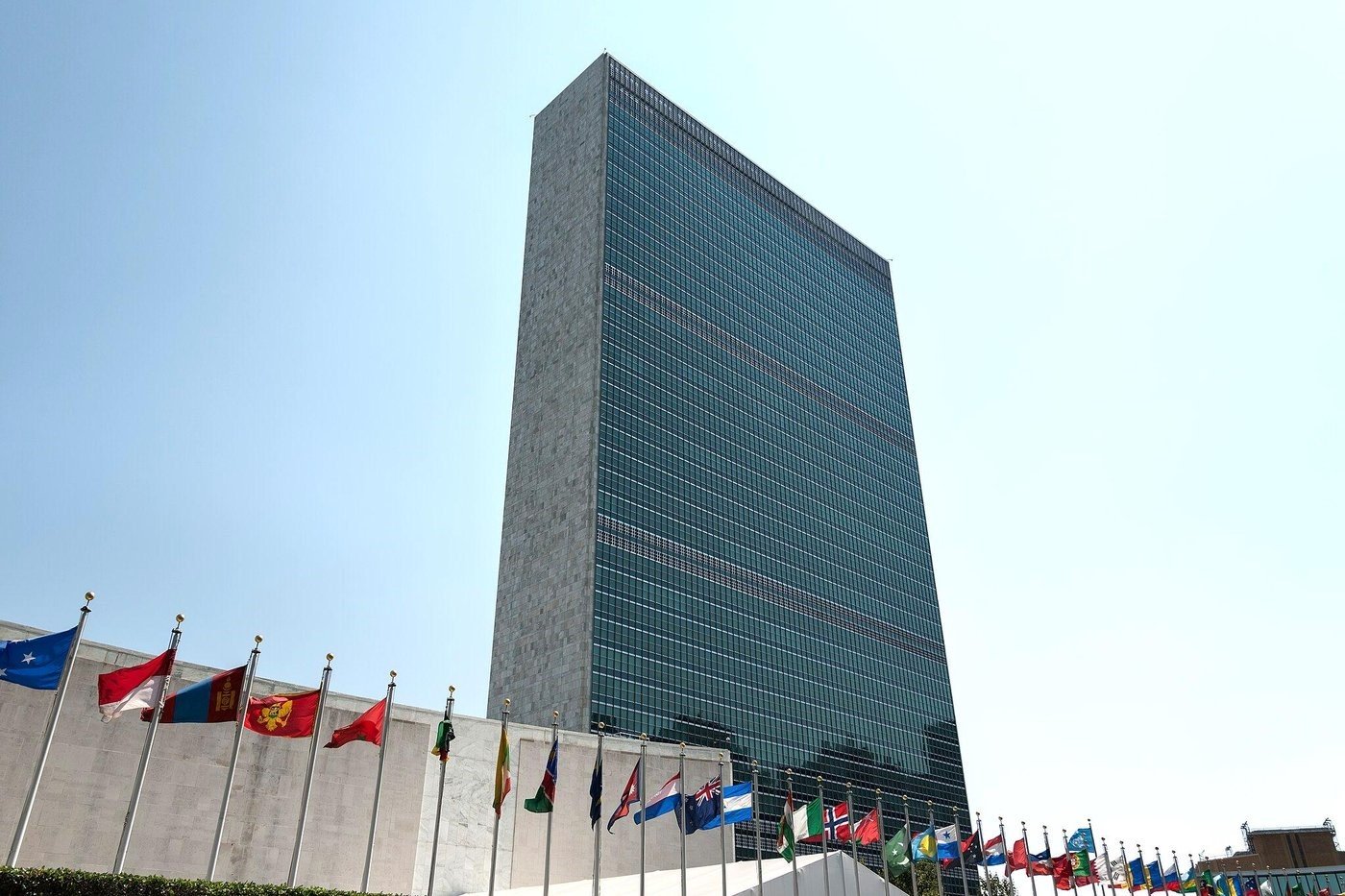EDITOR’S NOTE: THIS PIECE IS AN Interview with Ian Bassin, COO Domestic of Give Directly. Ian Bassin previously served as Assistant Counsel to President Barack Obama and, most recently, Deputy Counsel to New York City Mayor Bill de Blasio. THIS PIECE IS PART OF A SERIES EXPLORING THE SUSTAINABLE DEVELOPMENT GOALS. SEE THE INTRODUCTION TO THE SERIES HERE.
Andrew Budsock: Describe GiveDirectly.
Ian Bassin: GiveDirectly gives unconditional cash transfers to the extreme poor. We try to understand how to optimize the use of cash transfers to combat poverty and how to answer some of the policy questions out there that may be impediments to broader adoption of the use of cash as a development tool.
Let’s talk about SDG1, Ending Poverty in all its Forms, Everywhere. How would you define poverty? Why does it happen, and why people can’t break out of it?
I.B.: Poverty in its simplest terms is a lack of money and resources. It is not a lack of capacity or ability. I think that has been a mistake that we, as a society, have made over the years. We’ve assumed that people who are poor must be poor because of some personal deficiency and that if we can only help them overcome that ability, skill, or capacity deficiency, that we’d be able to help them get out of poverty. What we found at GiveDirectly through the research that we’ve done and through research that’s been done over the last decade, is that giving poor people money works.
They don’t spend it on vice consumption like alcohol or tobacco. A recent World Bank study has shown that cash transfers don’t effect or, if anything, reduce the consumption of vice goods. Recipients of cash transfers don’t discourage work either. Our recipients typically use the funds that we transfer to them for priorities like putting a roof on their home, investing in a small business or farming, paying school fees for children or healthcare.
We need to rethink what it takes to get people out of poverty and move away from the idea that we’re trying to fix people who have some deficiency and instead we should focus on fixing a resource gap.
PHOTO CREDIT: GiveDirectly
Given the success that GiveDirectly has experienced, would you say that previous aid efforts, in a way, underestimated or discounted impoverished communities? By discounting I mean, their capacity to improve their lives, to empower their own communities, and make their own decisions.
I.B.: There has been an assumption that experts know best what poor people need. The truth is, I don’t know what an individual family living on 65 cents a day needs. I certainly don’t know better than they do. We’ve tried to make decisions for the poor for a long time; and, we’re now seeing that the poor don’t always agree with the decisions we make for them. Roughly 70 percent of Syrians in Iraq who received food aid tried to sell that food aid to get something that they need more. There was a study in Bihar, India showing that recipients of food vouchers often sold them for somewhere between 25 percent and 75 percent of the value of the voucher. The idea behind cash transfers is that the poor know what the poor need, and by and large they spend money on their priorities in as wise a way as we spend money on what we view to be our priorities. That doesn’t mean that people don’t sometimes misjudge their priorities, but you and I misjudge our priorities too.
For a full mindmap containing additional related articles and photos, visit #SDGStories
This idea of a basic income is featured on your website. Can you describe what basic income is and how could we use this idea to start thinking about SDG 1?
I.B.: A “guaranteed basic income” or “basic income guarantee” is the idea of providing a minimum floor for all members of a community. It’s enough to meet basic needs, so it would be enough to live on without work or other forms of income. It’s guaranteed over the long term so that you can make decisions about major life plans with a minimum level of basic security. And it’s universal in that everyone gets it. It’s also been talked a lot about for many decades.
It has supporters from across the political spectrum ranging from Martin Luther King, Jr. to Milton Friedman and F. A. Hayek. It has started to pick up a lot of interest recently across the globe, from Canada to Europe, to Namibia. And people are attracted to it for a range of reasons, from seeing it as potentially superior to the overlapping patchwork of existing welfare systems, to seeing it as a moral imperative in a world of abundance, to those who are starting to look ahead to the future of work, who are seeing the rise of artificial intelligence and “robotization”, and who are wondering what will happen to the labor force when more and more jobs become automated.
We are planning a major implementation and evaluation of a universal basic income, to launch shortly in Kenya. In it, we’re going to be providing whole communities with a regular basic income for 12 years. And we have three of the world’s leading researchers on board to rigorously evaluate it: J-PAL co-founder Abhijit Banerjee, former Chair of the Council of Economic Advisors Alan Krueger, and MIT professor Tavneet Suri. We’ve raised $22 million so far for the project and need to raise another $8m to run the full randomized controlled trial.
What’s the scale of that kind of project?
I.B.: Six thousand individuals in Kenya will receive a full basic income for twelve years and around 20,000 individuals will receive cash for a shorter period of time. And if you look at the targets of SDG 1, one of the targets speaks of providing a floor to help people out of poverty. And so there’s a potential here that what we learn from this pilot could really help inform how we go about addressing that target in SDG 1.
In your view, do you think we’re on track to achieving SDG 1? And what do you think are kind of the biggest barriers for the next five years?
I.B.: There’s obviously some good news in the fact that the World Bank announced in 2015 that it was the first time ever we brought the percentage of the global population living in extreme poverty below ten percent. There’s other good news — a paper recently put out by Brookings estimated we could bring everybody in the world up to a dollar ninety a day for about eighty billion dollars. What’s good about that is that the global aid budget is somewhere in the range of a hundred and thirty to a hundred and forty billion. So, in the last decade, the global aid budget has actually surpassed the cost of getting everyone out of extreme poverty.
This suggests that there’s massive potential to advance towards SDG 1 by spending existing budgets more effectively, and so one of the things that we’re trying to do at GiveDirectly is force people to ask the question: Are we spending our aid dollar better than the poor can spend it for themselves?
Cash should be a benchmark for decision making. If we’re not doing more with our dollar than the poor could do for themselves, we should probably just be giving them the dollar. There’s likely a lot that we’re doing in the aid world that could be done either more efficiently, if we held ourselves to that rigorous standard, or that could be done better by the beneficiaries if we actually just gave them the funds.
 PHOTO CREDIT: GiveDirectly
PHOTO CREDIT: GiveDirectly
How do you choose the communities that you work in, and what’s the process of approaching these communities in the field?
I.B.: We started our program in Kenya because they had a very robust mobile money payment system there, and that’s the means by which we transfer cash to poor households. Then, we look at data on where the poorest communities are and approach local government officials to seek permission to operate in that community and to talk to the leaders of that community.
Then we work on designing a targeting mechanism to make sure that we’re reaching the poorest members of that community, and that it is transparent and easy to explain. This way everyone understands who’s receiving the transfer and who’s not. This also makes it easy for us to audit, so that we can make sure that, in fact, the right people are receiving the transfer. One of the benefits of doing unconditional cash transfer programs is they can be done very efficiently because there’s not an enormous amount of programmatic architecture and overhead, so in Kenya we’re able to transfer ninety cents on the donor’s dollar to a beneficiary. And that is in part from running a very, very efficient system.
Within these communities, you have people that are receiving money and also the non-beneficiaries of the money. Are there long-term effects of this? Is this something you’ve looked at?
I.B.: One would expect to see a larger potentially negative spillover effect, but we haven’t seen that in the research. In fact, we recently went around to one of the villages that we had done transfers to early on in GiveDirectly’s existence and interviewed all the members of the village, both those who had received and not received the funds. Anecdotally, what we found is that the non-recipients had interesting responses. Some of them expressed a level of disappointment or frustration at not personally having received the transfers. But some of them also expressed a level of gratitude and appreciation that GiveDirectly had done transfers in their village. So they separated out their own personal disappointment with their happiness for the broader impact on the village. And that was an interesting, at least anecdotal, reflection on how people might be reacting to being the non-recipients when their neighbors were recipients.
How do you generally monitor communities, and then, for your participants, are cash transfers a one-time aid package? Or can you receive additional funding?
I.B.: Our core program is a transfer of a thousand US dollars roughly over the course of several months, and once you’ve received that transfer, that’s the end of the program. The basic income program is a new variant where we would actually be guaranteeing people in that project a regularized income over twelve years. So for us, we don’t do the kind of monitoring that’s required in say a conditional cash transfer program where you’re only making payments to someone on the condition that they do something, whether it be stay in school or visit the doctor. We don’t do that because there’s a high cost associated with monitoring those programs and from what we’ve seen in the evidence that additional cost is not justified by a commensurate additional benefit. Our recipients use the funds incredibly wisely. They don’t spend it on alcohol. They tend to spend it on positive goods and what we saw in our original RCT was that after the transfer had ended our recipients saw their incomes rise by thirty-four percent, saw their assets increase by fifty-eight percent. Food insecurity went down, psychological well-being went up. We even saw spillover effects in the village on views of female empowerment since we split our transfers fifty percent to men and fifty percent to women. There’s an assumption out there that we need to monitor how poor people spend their funds. We did that to the extent of collecting data for our research, but otherwise, we trust the poor to spend the funds wisely.
We do follow up with our recipients to ensure that the transfer was successful and to make sure that there weren’t any negative events like bribery, or fraud, or the creation of conflict or violence. So we do monitor to make sure none of those things happen, and we also follow up with our recipients to see how our customer service was. We have a feedback loop to make sure that our beneficiaries feel that they were treated well by GiveDirectly. We think that’s really important. I think there needs to be more accountability to beneficiaries in the sector and we need to make that accountability and feedback loop a really systematic part of doing aid.
Related Article: “ENACTUS, A FORCE FOR DECENT WORK AND ECONOMIC GROWTH“
How do you ensure equal access to funding within the household between men and women? Do you think that the reason why households are spending the money wisely is due to the inclusion of women in the decision-making process?
I.B.: It’s funny, in our first RCT (research on cash transfers), there’s a point in the paper where the authors talk about stress levels in the household, and they found that stress levels in the household were actually less when it was the wife in the household who received the funds instead of the husband.
One of the things that we monitor, you know, when we go back and follow up with our beneficiaries is to make sure that the processing of the transfer hasn’t created an undue amount of conflict in the household, particularly around things like who receives the funds and who decides on spending. What we’ve seen generally is that families will often sit down together and decide how to spend the funds. You can actually do a virtual walkthrough of one of our villages on our website, and several of the recipients talk about how they make decisions about how to spend the funds and who they prefer in the family to do it, if not one, both, then the other.
PHOTO CREDIT: GiveDirectly
Do you have plans to expand outside of Kenya and Uganda at this point?
I.B.: We have plans to scale up the amount of transfers we’re delivering, but there are plenty of poor people for us to be delivering those to in the regions where we’re currently operating. Our primary goal is to help demonstrate the effectiveness and efficiency of cash transfers to help drive cash as a benchmark for decision-making in the aid sector, and we can do that by continuing to scale up where we are. That said, we’re obviously interested in answering the pressing policy questions around cash transfers and to some extent those questions can only be answered in other places. How does cash work in an urban setting? How does it work in different regions? We want to be that knowledge laboratory and when partners approach us and want to answer some of those questions, we look at whether it makes sense to go and answer those in another place. At the end of the day, you know, the poor are poor because they lack money, and we want to rigorously test and evaluate the best ways to get it to them wherever they may be.
So, do you have a particular story that comes to mind, or an example of a family or a community that GiveDirectly has really helped?
I.B.: There was a staff member of ours who was in the field meeting with beneficiaries, and met with a fisherman. And this fisherman actually came from a long line of fishermen, his father was a fisherman, his grandfather was a fisherman. He very much knew how to fish, but he couldn’t get his fish to market because it was too long a distance to bring it from where he was fishing to the market without a cooler. So, he really needed the funds for a cooler to get it to market. You know, there’s obviously the old saying: don’t give a man a fish, teach him how to fish. And that aphorism drove a lot of policy making around the idea to not just provide the poor with cash or resources. You have to give them training and other support. This man was kind of the ideal, you know, rebuttal to that aphorism. He knew how to fish quite well, he just needed the funds to turn it into a business.
PHOTO CREDIT: GiveDirectly
What would you say inspired you about the work that you do?
I.B.: I think as a child I saw homelessness and poverty growing up in New York City just below the windows of 5th Avenue mansions, and there was something that even an eight-year-old can see was wrong about such a wealthy planet generating such inequality. There’s something about what we do at GiveDirectly that’s so simple that it could have been the idea of that eight-year-old, which is, there are incredibly poor people in the world, a world with an enormous amount of wealth and resources. We could give them some of that money and do a world of good, and that’s essentially what GiveDirectly does. And I find that to be an inspiring thing to wake up and do every day.
Recommended Reading: “NEW APPROACHES TO ADDRESS THE RISE OF URBAN POOR“


